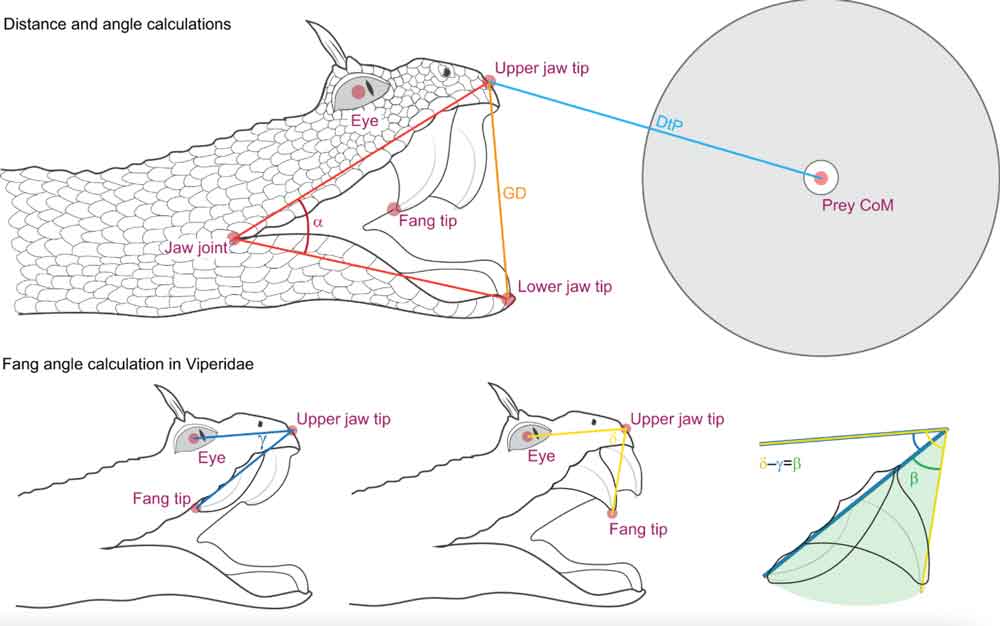Venomous snakes in the Viperidae family reached faster peak velocities than elapids, with the exception of the rough-scaled death adder.
Researchers have recorded the strikes of some of the most venomous snakes in the world in an effort to showcase how their strikes compare among the 36 venomous snake species from three families; 31 Viperidae, 4 Elapidae and 1 Colubridae. The researchers employed high speed video cameras capable of capturing 1,000 frames per second to record the strikes of these snakes at a ballistics gel prey. They also tracked the strike trajectory in 3-D to measure strike movement and performance.
They then compared the performance within the Viperidae family across “predation style, diel activity pattern, diet, habitat type, temperature and first jaw contact with prey.” They also measured variables such as peak velocity and acceleration, the angle of the snake’s gape, the start distance and contact angle as well as the head size. These measurements all varied by the part of the jaw that first contacted the prey.
They found that the venomous snakes in the Viperidae family reached faster peak velocities than elapids, with the exception of the rough-scaled death adder (Acanthophis rugosus) which was just as fast as the vipers. The ambush predators and those that preyed on mammals had faster strike velocities. They often reached the target prey within 100 ms, which is within the mammalian startle response, the researchers noted.
The researchers also noted the behavioral differences among the three families. Viperidae strikes were smooth and often combined with fang repositioning. Elapidae had a fast bite time and bit and repeatedly squeezed their prey with their jaws and the Colubridae used their rear fangs by damaging the prey’s surface with alternate jaw movements.
The complete paper, Kinematics of Strikes in Venomous Snakes” can be read on The Company of Biologists website.



